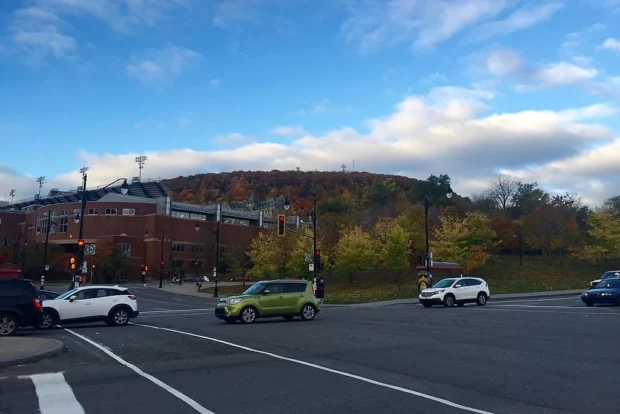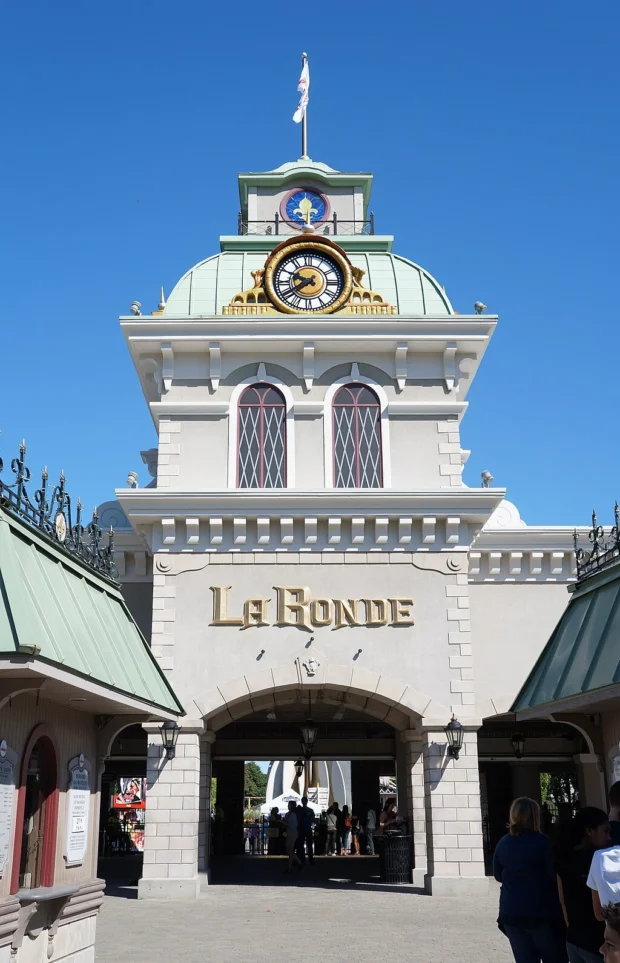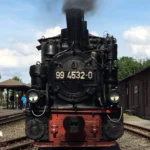Montreal is a lively city with a blend of French and English influences. Located on an island in the Saint Lawrence River, it offers a mix of old charm and modern life. Anyone coming here will notice its markets buzzing, street cafés humming, and people speaking a curious mix of languages. This article shares practical tips for moving around, seeing sights, trying foods, and understanding cultural do’s and don’ts, all while capturing the essence of Montreal with simple English. Let’s step into its rhythm and grasp what makes this place tick.
Table of Contents
Getting Around Montreal: Transport Insights
The city’s public transport system is a model of efficiency. The Société de transport de Montréal (STM) manages buses and the metro (subway). The metro has four color-coded lines-green, orange, yellow, and blue-that cover a large part of the island. Trips usually cost about $3.50 (Canadian dollars) and tickets work for both buses and metro, making intermodal travel easy without buying separate passes.

To reach downtown from Montréal-Trudeau Airport, the easiest and cost-effective way is the 747 Express Bus. It runs 24/7, takes about 45 minutes, and costs a fixed fare that includes unlimited travel on STM buses and metro for 24 hours-smart for arrival day movement. Buses stop at main points like Jean-Talon metro and Central Station, which connects with commuter trains and long-distance services.
For those cycling enthusiasts, Montreal has over 600 kilometers of bike paths and corridors, including routes along the scenic Lachine Canal and Mount Royal Park. Renting a bike is a popular method to explore at your own pace. Remember, the city provides the BIXI bike-sharing system, with stations scattered generously-a practical way to get short-distance tickets without owning a bike.

Montreal’s Iconic and Lesser-Known Attractions
Most visitors head straight for Old Montreal-Vieux-Montréal-a district with cobblestone alleys, grand basilicas, and the old port. The Notre-Dame Basilica’s interior amazes with its colorful lights and detailed wood carvings. But, here’s a small secret: just behind the Basilica, Rue Saint-Paul holds little art galleries and cafés where locals like to meet without tourist crowds.
Mount Royal Park calls for attention, beyond its panoramic views. It’s an urban park designed in the 19th century by Frederick Law Olmsted, the same mind behind New York’s Central Park. Climbing up isn’t hard; pathways are easy to follow with clear signs. Find a quiet bench, soak in the city’s skyline, and watch joggers or families enjoying the breeze.

Another must-see is the Jean-Talon Market in Little Italy, one of North America’s largest public markets. It bursts with colors from fresh fruits, cheeses, and flowers, and offers a real slice of Montreal’s food culture. Sampling freshly pressed apple cider or trying local cheeses on the spot creates what I call “postcard food moments.”
Eating in Montreal: District Flavors and Delights
Montreal’s food mix is as rich as its history. Beyond the famous smoked meat sandwiches-a must for many-there are poutine spots almost everywhere. This simple dish of fries topped with cheese curds and gravy varies by neighborhood, with some extra ingredients adding a wow-factor.

In the Plateau district, bistros serve French-inspired dishes with a twist-perfect for admirers of creative cuisine. Meanwhile, the Mile End area is the heart of Montreal bagels, renowned worldwide for their denser, sweeter style baked in wood-fired ovens. Sampling a sesame bagel here is very different from the usual bagel experience; the texture and flavor hint at a long tradition.
For those interested in a peaceful city with rich history and charming local spots, consider a visit to Cambridge with its cozy markets and quiet river walks.
Don’t miss trying “maple taffy” if you visit during the spring maple season. This sweet treat is made by pouring warm maple syrup over snow, which hardens into a chewy candy. It’s an odd creation, but locals swear by it.

Customs and Culture: Simple Ways to Fit In
Montrealers are polite yet casual. Greeting someone with a friendly “Bonjour” or “Salut” is appreciated, especially in French-speaking parts. It’s a city where bilingualism shapes daily life, but French remains dominant in many areas.
When dining, tipping 15-20% is customary, reflecting respect for service workers. Public behavior is usually calm-even in crowded settings. Loud phone calls on public transport are frowned upon; instead, people prefer quiet or chatting softly.

An interesting custom is the “je-ne-sais-quoi” attitude in conversations. People often joke or make light comments to ease into topics, showing friendliness without rushing into personal questions.
Staying in Montreal: Neighborhood Options
Accommodation choices range widely. Downtown offers convenience near business centers and shopping, suitable for those who like busy environments. For a more relaxed mood, try the Plateau or Mile End districts, filled with cozy cafés, bookstores, and street art. This area appeals to those who enjoy a neighborhood feel, within walking distance from many attractions.

For budget travelers, neighborhoods like Hochelaga-Maisonneuve or Verdun provide more affordable stays and easy metro connections. These areas have their own charm too, with local markets and parks less trodden by tourists.
A Fun Montreal Transportation Story
Once, a friend told me about the time they missed their metro stop because a group of local musicians got on, playing jazz tunes loudly. People started to dance inside the wagon-completely unexpected but vividly Montreal. The metro driver even paused for a moment to enjoy the show. It’s those small quirks that turn a simple ride into a memorable moment.

Montreal’s infrastructure, from its metro to bike lanes, is generally well planned and accessible. Several stations have elevators and ramps. While the city is hilly in parts, many routes avoid steep climbs, making it manageable for most visitors.
Final Thoughts on Montreal’s Urban Rhythm
Montreal feels like a city that balances its historical legacy with modern needs. Its transport system allows visitors to move smoothly; its markets and neighborhoods offer tastes and sights layered with stories. Whether walking along Saint Laurent Boulevard or sitting in a café watching people passing by, there’s a rhythm to the city that invites you to slow down a bit and simply feel the pulse.

Planning your days with an eye on timing helps. Peak hours on metro are busy (7-9 AM, 4-6 PM), but outside those, getting around is almost effortless. Montreal’s layout encourages exploration by foot, bike, or public transit, making each part of the city accessible and full of life.
Next time you pack bags for somewhere new, remember Montreal’s blend of languages, flavors, and well-crafted city life. It’s more than a stop on a map-it’s a place where everyday life becomes a collection of small stories waiting to be noticed.


- Hôtel de Ville de Montréal, juin 2024 by Pierre5018 on Wikimedia Commons – cc by 4.0
- Basílica de Notre-Dame, Montreal, Canadá, 2017-08-11, DD 20-22 HDR by Diego Delso on Wikimedia Commons – cc by-sa 4.0
- View of Mount Royal Park by Meg.jenk on Wikimedia Commons – cc by-sa 4.0
- Basílica de Notre-Dame, Montreal, Canadá, 2017-08-11, DD 26-28 HDR by Diego Delso on Wikimedia Commons – cc by-sa 4.0
- Montreal-Museum-of-Fine-Arts-May-2024 by Acediscovery on Wikimedia Commons – cc by 4.0
- Montreal Biodome from west side, 2004 (1792914491) by Morgan from Montreal, Quebec, Canada on Wikimedia Commons – cc by 2.0
- Montreal Botanical Garden April 2017 001 by King of Hearts on Wikimedia Commons – cc by-sa 4.0
- Marché Jean Talon – petite Italie – Montreal – Quebec – panoramio (2) by figa on Wikimedia Commons – cc by 3.0
- Oratoire Saint-Joseph du Mont-Royal – Montreal by Paolo Costa Baldi on Wikimedia Commons – cc by-sa 3.0
- Pointe-à-Callière by Flickr user Rice Cracka on Wikimedia Commons – cc by 2.0
- LaRonde main entrance – panoramio by Jiaqian AirplaneFan on Wikimedia Commons – cc by 3.0
